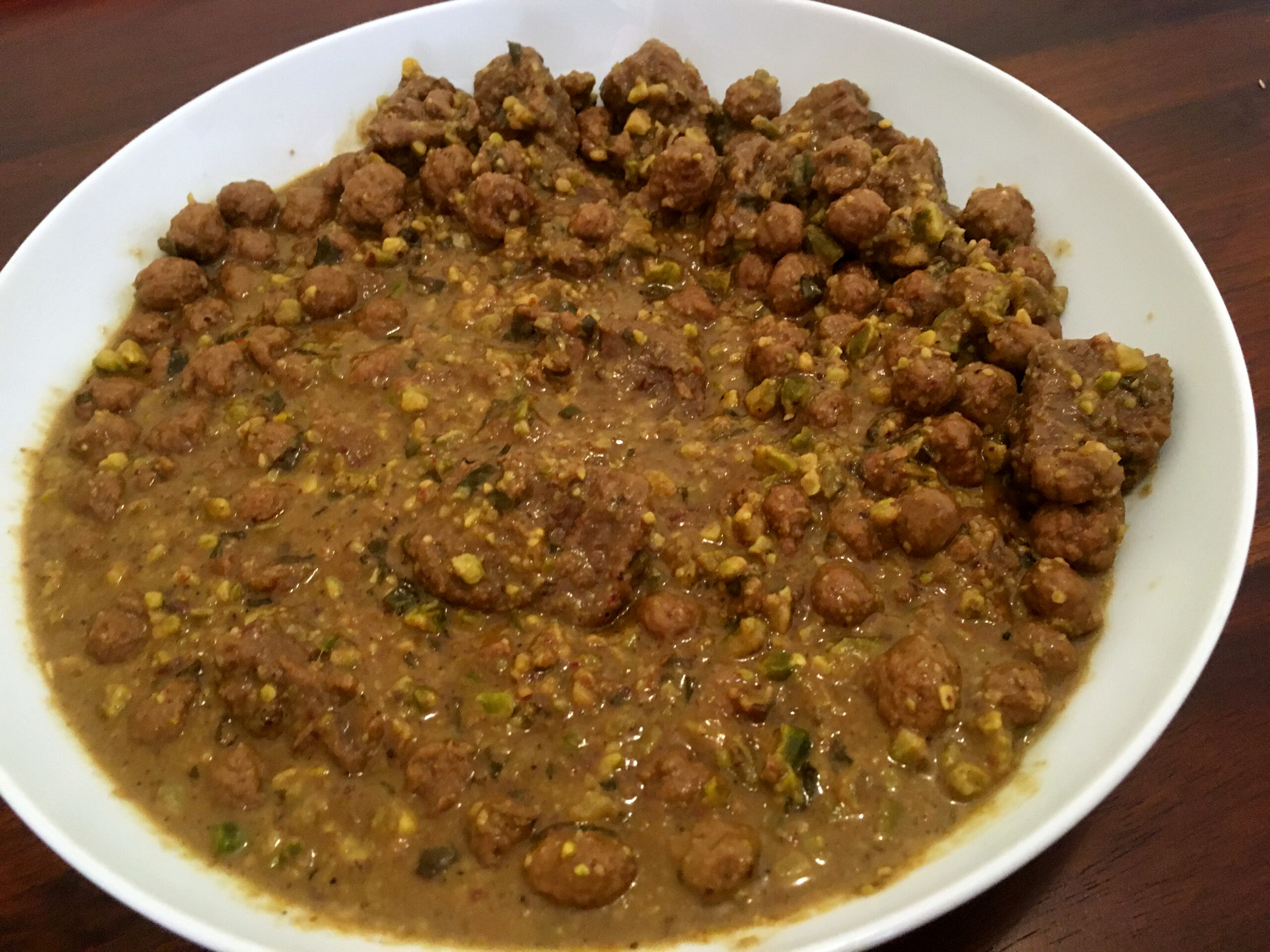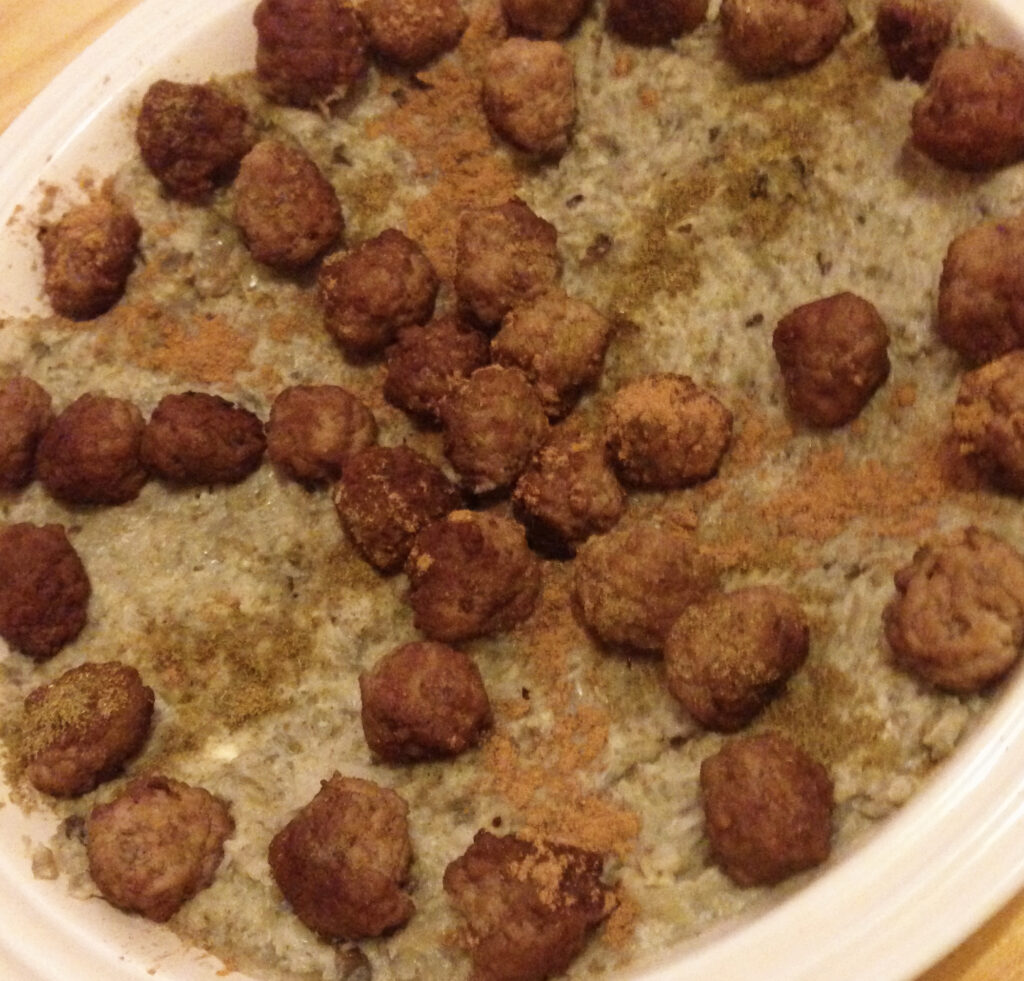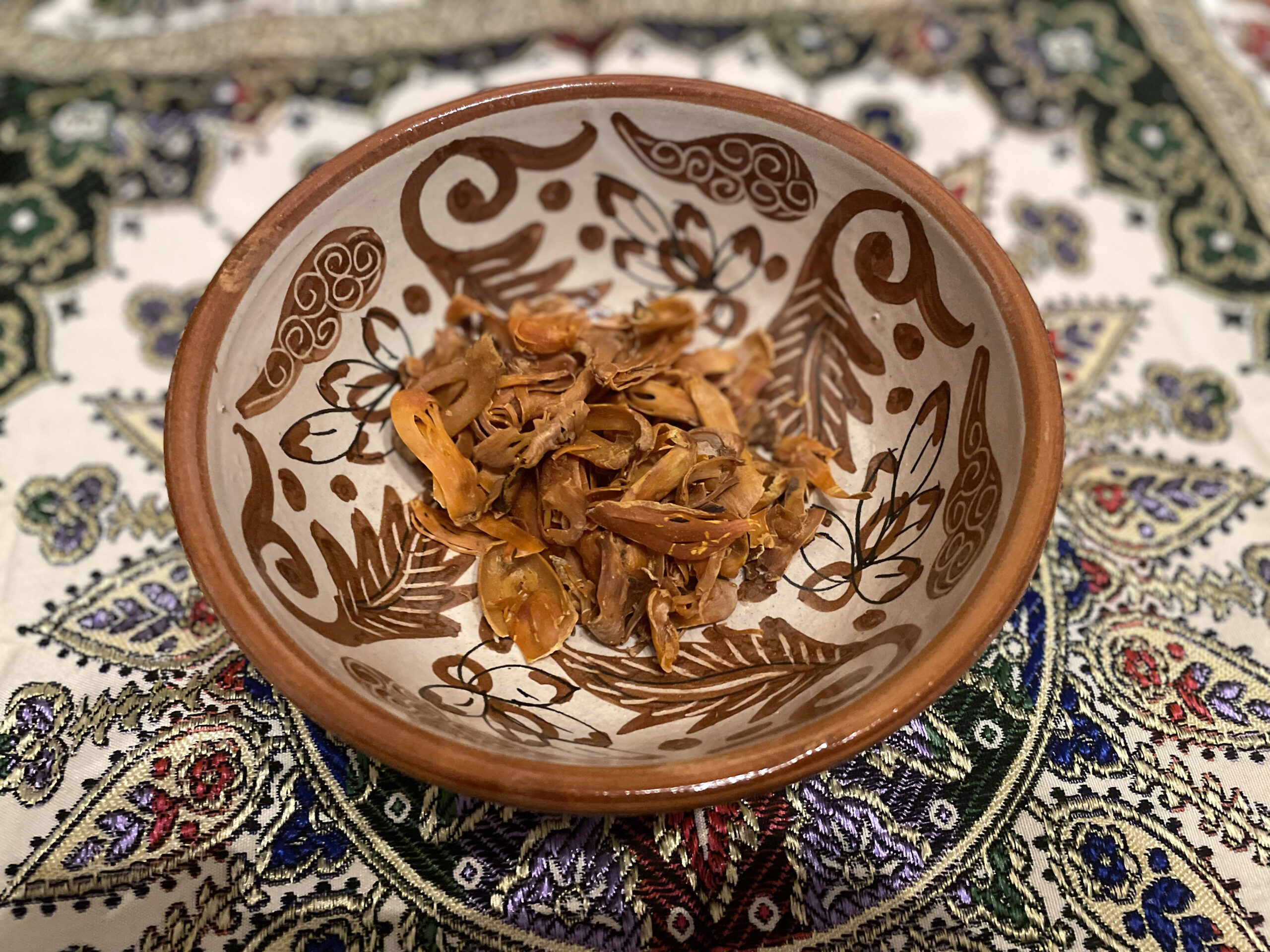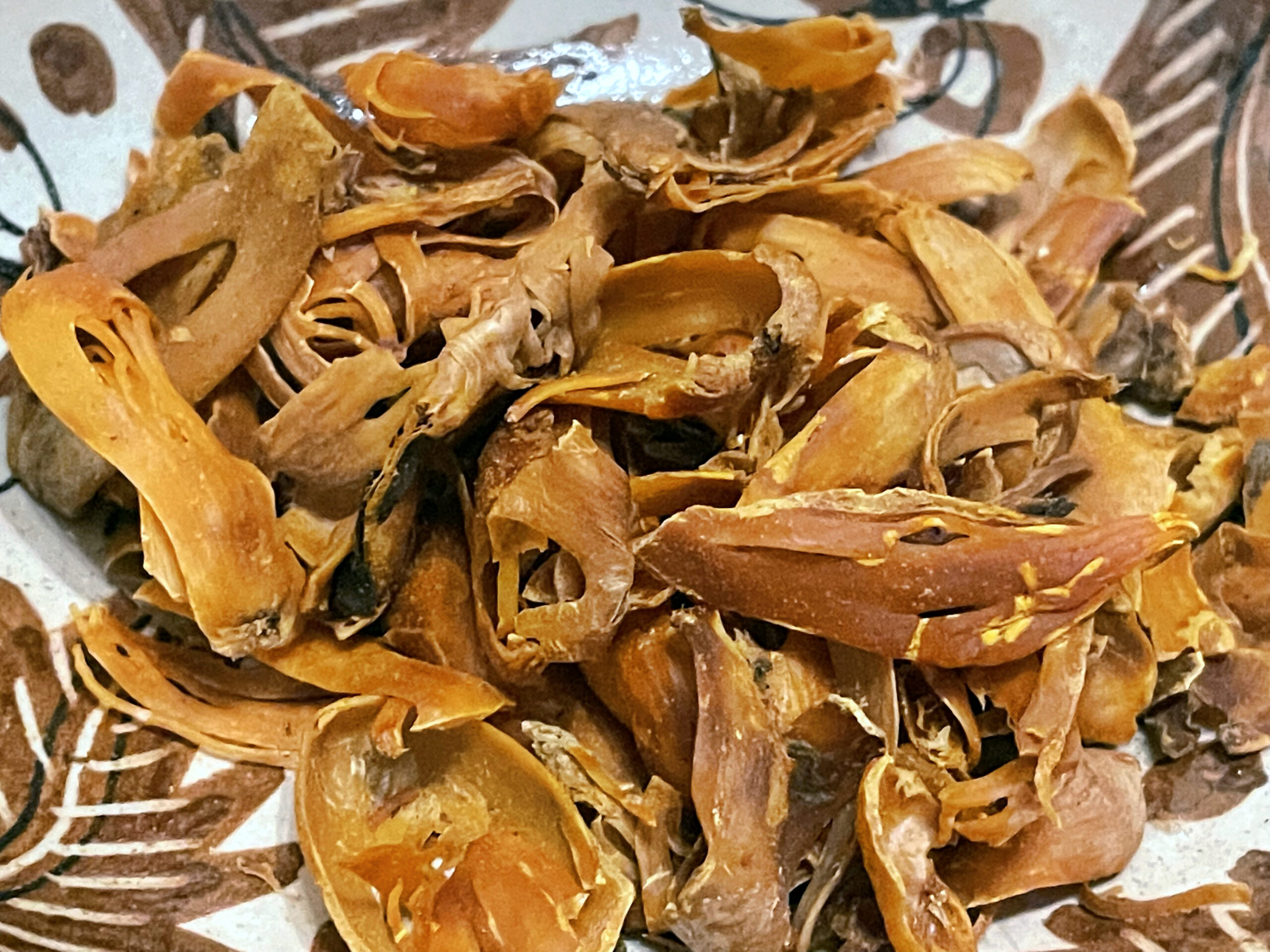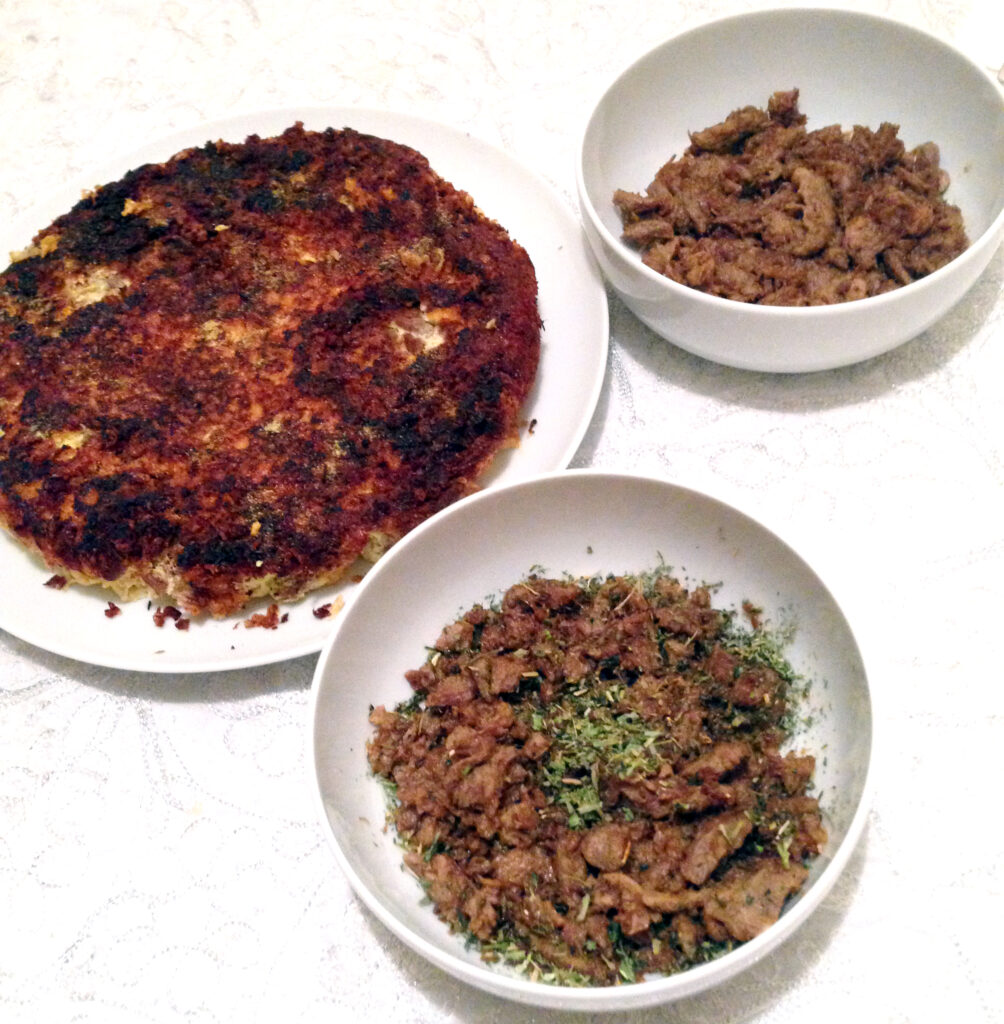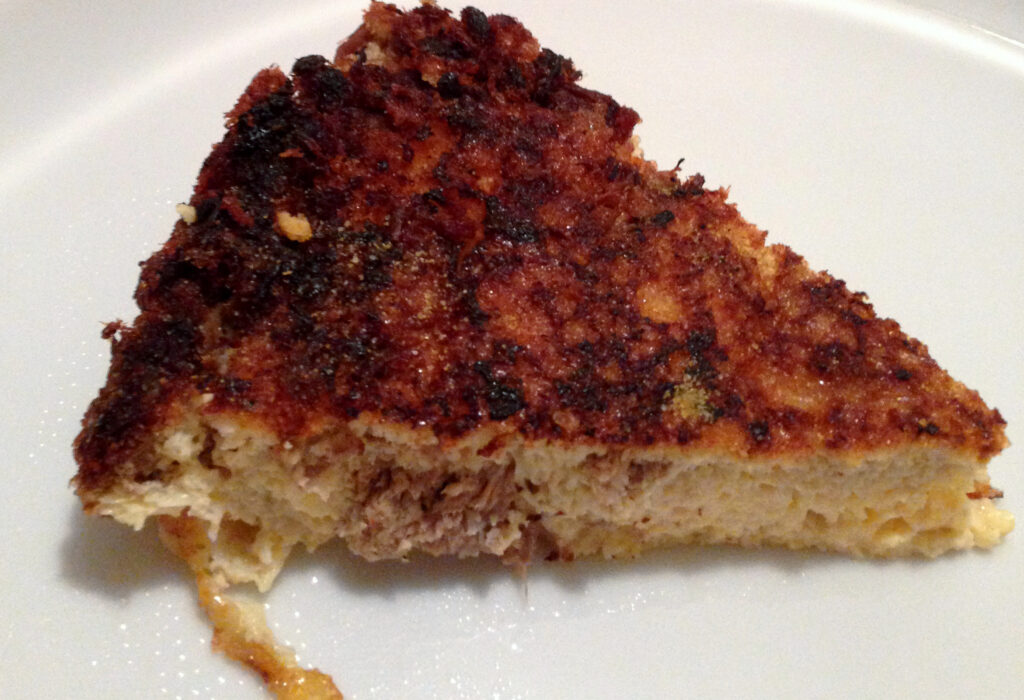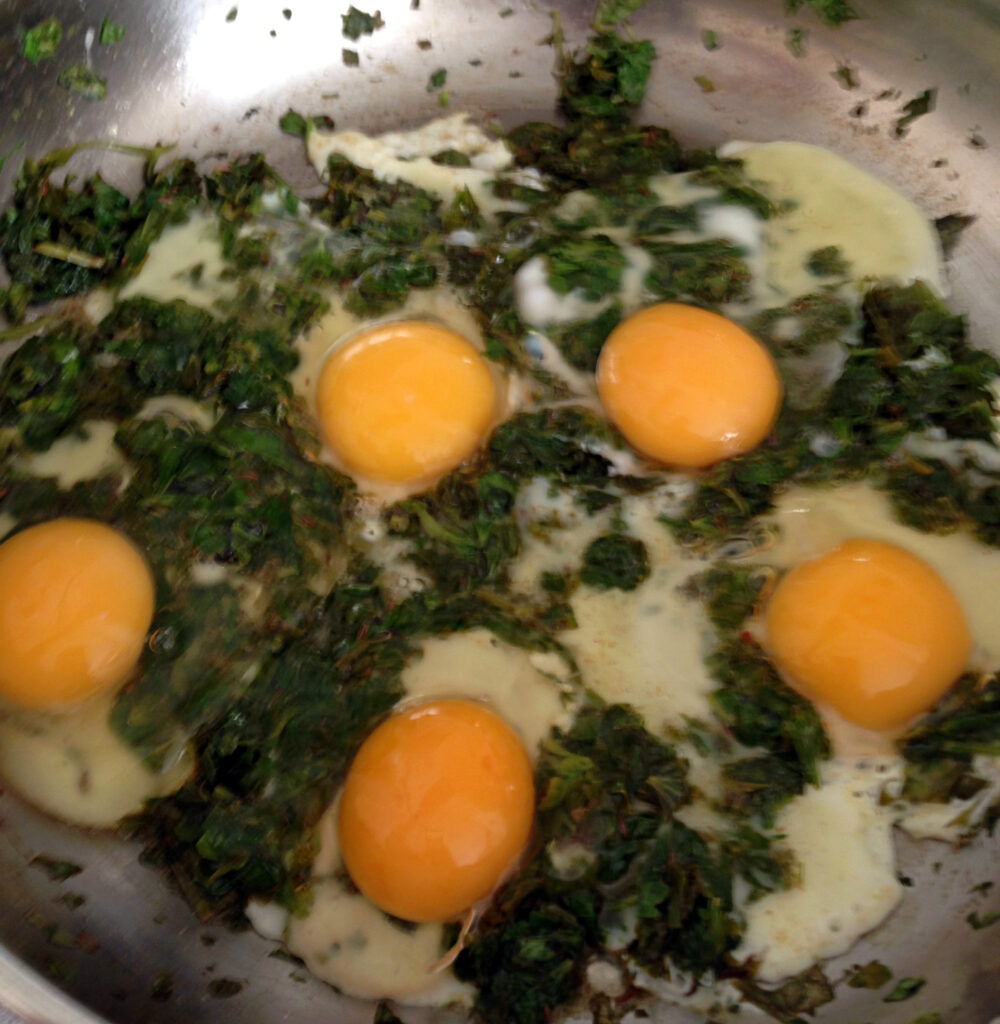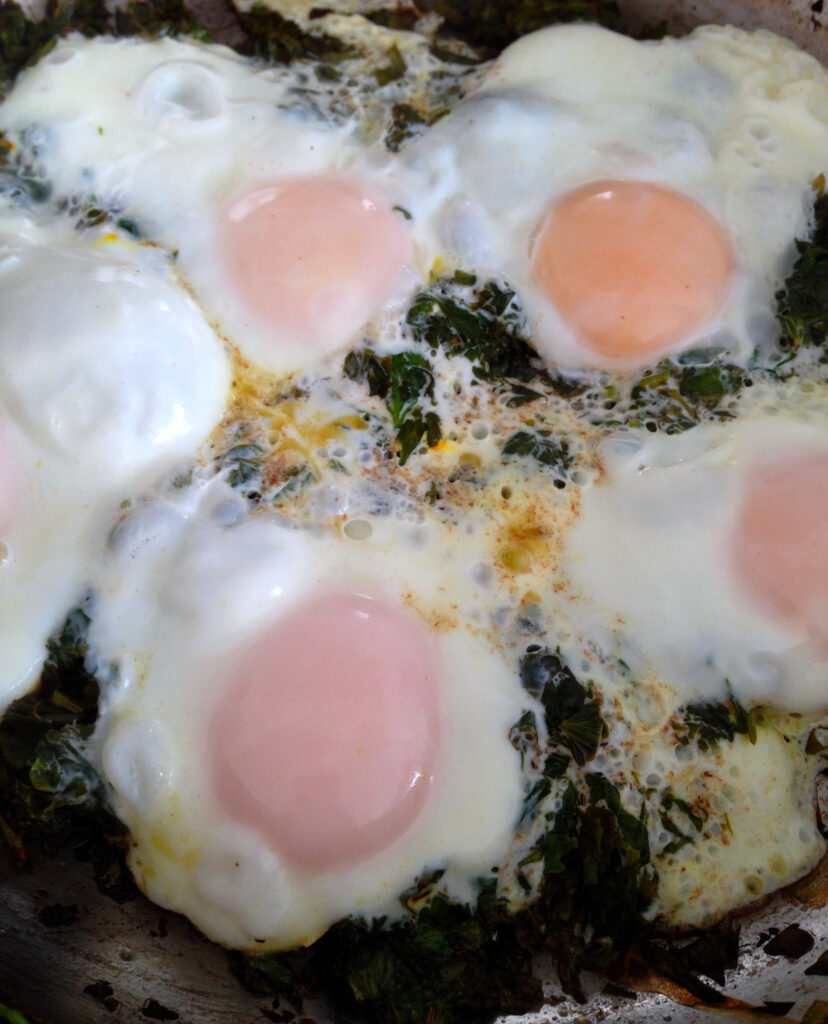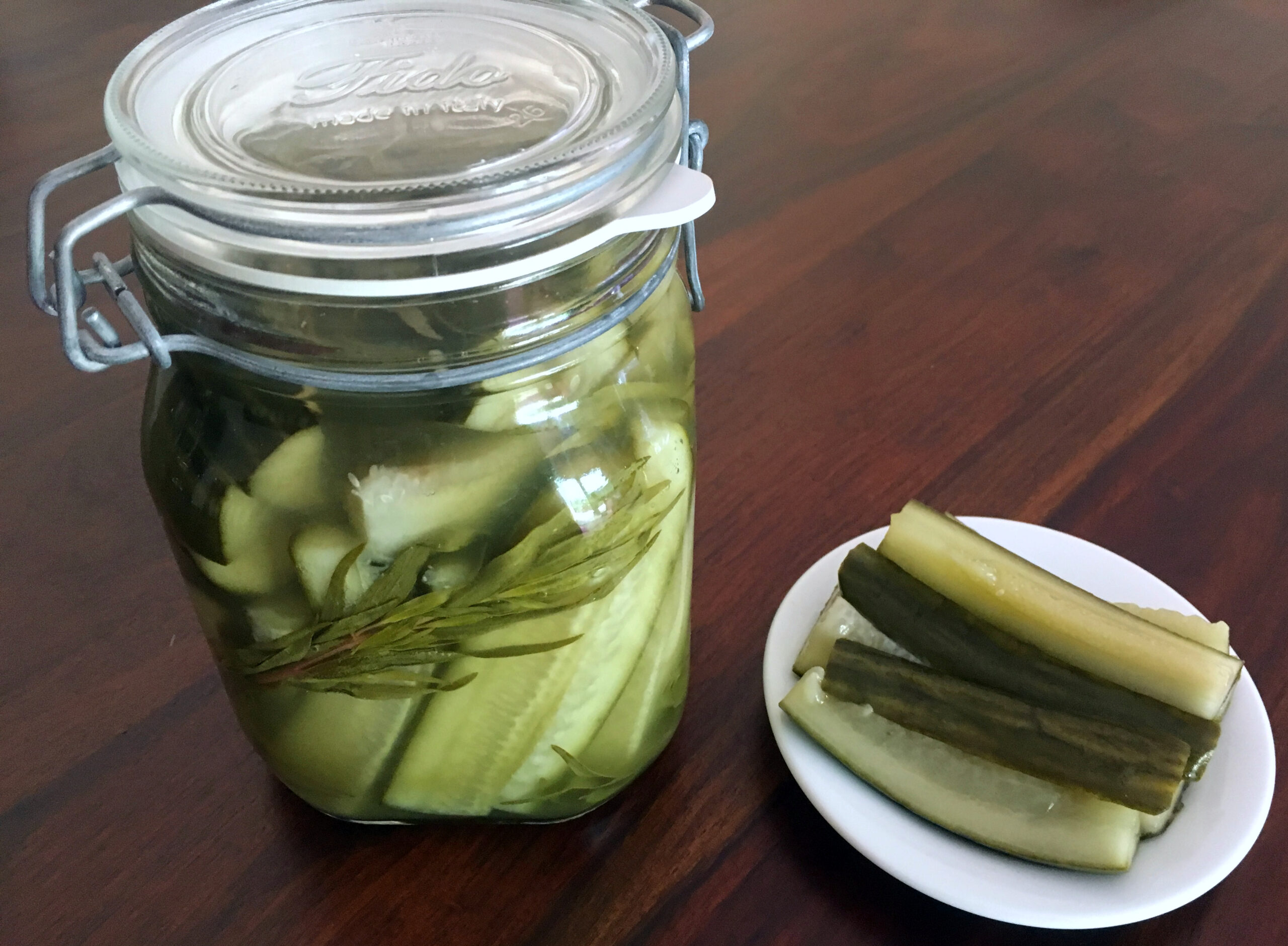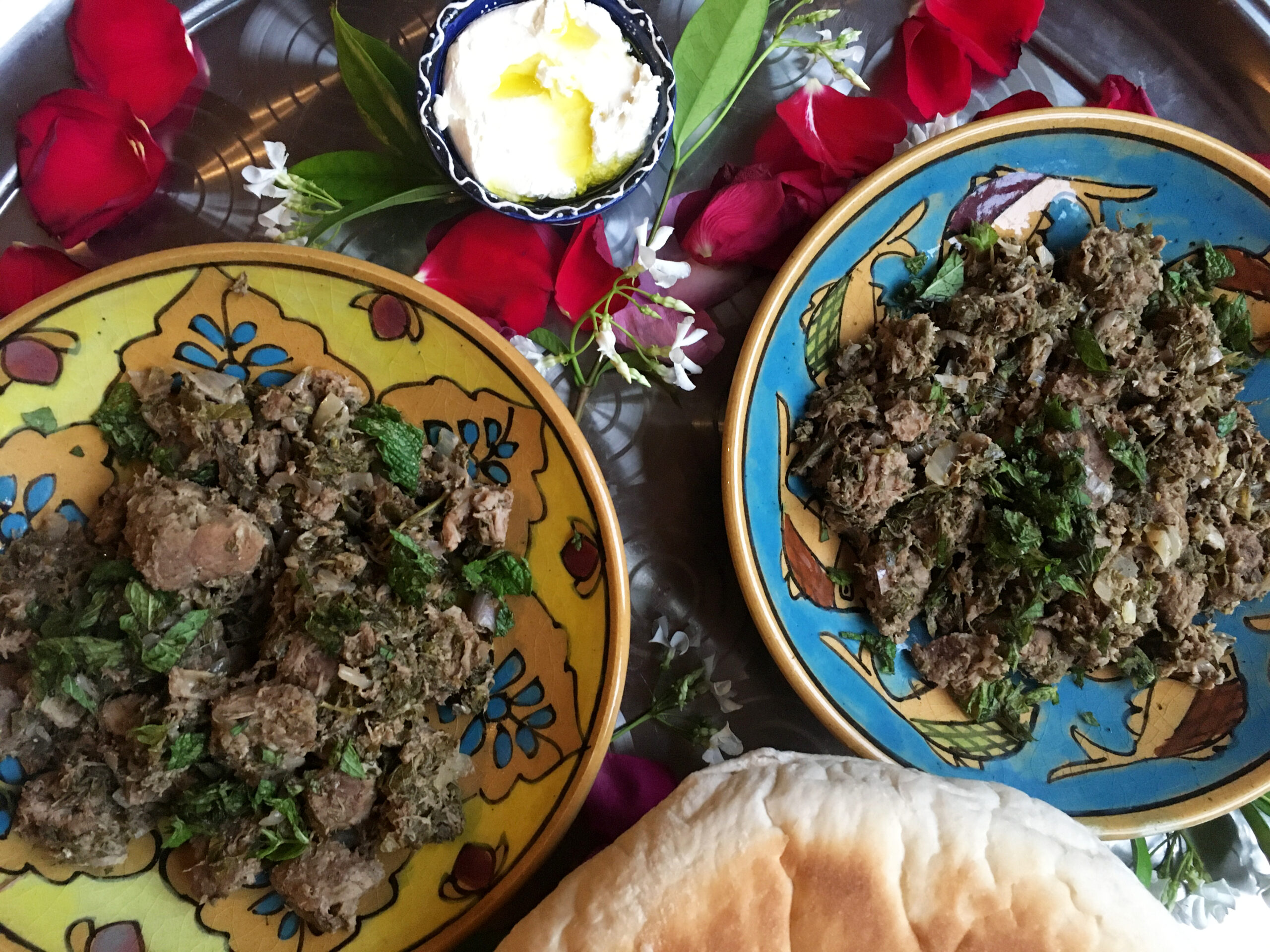Recipes for this delicious sweet are found in 13th-century Syrian and 14th-century Egyptian cookery books. They are called ‘mulberries’ (tūt, توت) in reference to their shape. The instructions could not be easier; after rolling the dough over a sieve to get the right texture, it is shaped into mulberry-type pieces which are then fried in sesame oil before being dipped in rose-water syrup. Serve with a dusting of sugar. They are an excellent accompaniment to mint tea! There is a direct modern descendant of this delicacy in the form of the Lebanese ma’kroon (معكرون), which in other countries are also known by the more poetical name of ‘Zeineb’s fingers’ (أصابع زينب). They are a very popular treat during Ramadan.



